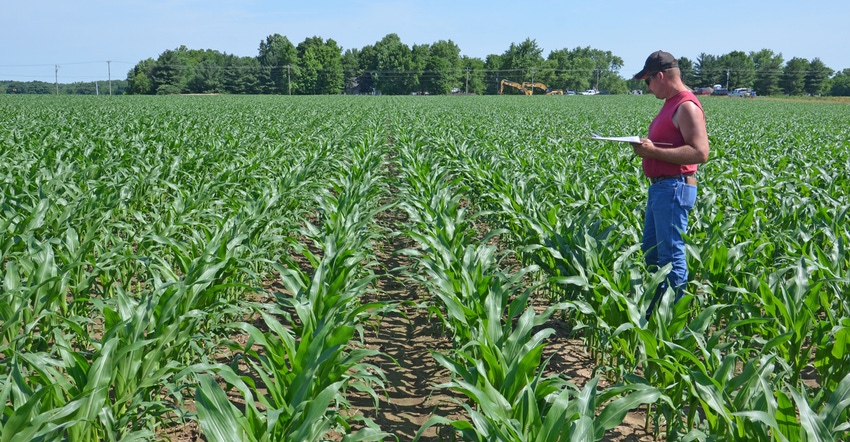
Maybe you have an on-farm trial this year. Perhaps you’re testing nitrogen rates for corn, or maybe you’re seeing if applying sulfur boosts yields. How do you know if you can trust your data?
Bob Nielsen, Purdue University Extension corn specialist, says the more care that went into planning the trial, the more likely you’ll get results that will indicate whether the new product, practice or hybrid actually produced more yield and paid for itself. Even then, though, remember, it’s only one test at one location in one year, Nielsen cautions.
To illustrate how important details can be in on-farm trails, here’s a deeper dive, using the Indiana Prairie Farmer/Purdue University corn trial as an example. Each year, Indiana Prairie Farmer participates in a replicated trial on a timely practice at the Throckmorton-Purdue Ag Center near Romney, Ind. Nielsen designs the trial and analyzes results after harvest. Beck’s supplies corn hybrids. Pete Illingworth and the rest of the farm crew provide the labor and equipment.
This year’s trial takes another look at economic optimum seeding rates for corn. Nielsen and Jim Camberato, also a Purdue agronomist, have accumulated lots of data over the past decade. They believe there’s very little difference economically between per-acre seeding rates from the high 20,000s to the low 30,000s. This year’s Throckmorton study will add one more look, using modern hybrids.
Details matter to crop trials
Here are some details that can affect the effectiveness of a trial:
Buffer between treatments. “We typically like to plant 12 rows of one treatment and harvest the middle six rows,” Nielsen says. “With GPS today, it’s relatively easy to do, even if the trial is planted with a six-row planter, like at Throckmorton.”
Why is it important to have buffer rows that aren’t harvested for yield? “Some plots could get an unfair advantage or be at a disadvantage, even though we assign treatments at random,” Nielsen says.
For example, in this case, if the thinnest stand wound up side by side with the thickest rate, the outside couple of rows of the thinner rate might be at a disadvantage because of more competition from the thicker, neighboring rows, and vice versa, Nielsen explains. Only harvesting center rows eliminates one possible cause of experimental error.
Seeding rates. In this case, four seeding rates were proposed originally to cut down on overall size of the trial. Five rates work better when you apply statistics, Nielsen says. So, the plan was adjusted for five rates. Originally, rates were to start at 26,000 and be 3,000 units apart. Nielsen suggested starting lower and making them 4,000 units apart. The seeding rates this year are: 22,000; 26,000; 30,000; 34,000 and 38,000 seeds per acre.
“You should go low enough so you are sure you find the zone where population is too low and limits yield,” Nielsen says. “From our earlier studies, 26,000 as a seeding rate might not be low enough. Also, if you spread rates out more, you’re more likely to pick up differences.”
Replication. Sometimes in the past, the trial was replicated four times. Fitting in four replications was a problem. Nielsen agreed that three replications were adequate.
“In these trials, you don’t often gain much in accuracy going from three to four replications,” he says.
Calibrate, calibrate! The trial will be harvested using a combine equipped with GPS and a yield monitor. The yield monitor will be calibrated for each hybrid.
“Calibration is essential if you want meaningful results,” Nielsen concludes.
About the Author(s)
You May Also Like




